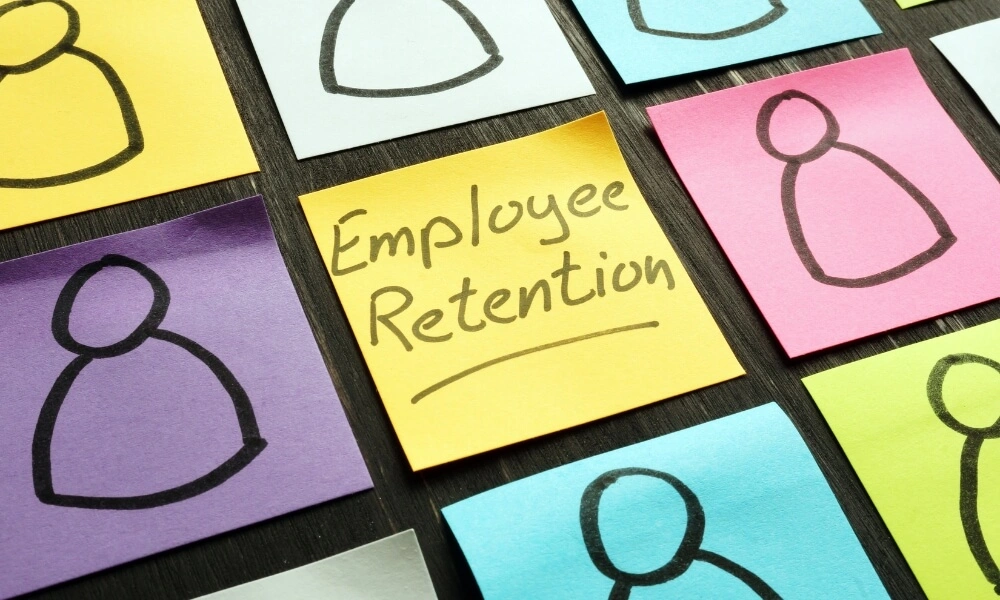In today’s rapidly evolving business landscape, companies constantly seek ways to foster employee loyalty, reduce turnover, and maintain a thriving workforce. While numerous factors contribute to employee satisfaction and retention, one stands out as foundational: the emphasis placed on safety and health within the workplace. As the adage goes, employees don’t leave companies; they leave environments. But how profound is the impact of a safety and health program on retaining talent?
In this blog, we will delve into the intricacies of workplace well-being and its direct influence on employee retention. Drawing upon research, expert insights, and real-world examples, we’ll unveil the symbiotic relationship between employees’ sense of safety and their likelihood to remain committed to an organization. Join us as we explore why investing in comprehensive safety and health programs might just be the game-changer your company needs.
The Link Between Safety and Retention: An In-depth Examination
Over the years, extensive research has shed light on the undeniable correlation between rigorous safety and health programs and heightened employee retention rates. When employees feel that their well-being is a top priority for their organization, their loyalty and commitment to that organization deepen. This chapter comprehensively explores this pivotal relationship, demonstrating how prioritizing employee well-being ensures their safety and fosters a deeper connection to the company.
Employee well-being goes beyond just the physical aspect; it envelops mental, emotional, and even social dimensions. As a result, a well-structured safety and health program seeks to address all these facets. When employees recognize that their workplace is a haven where their holistic health is considered, they inherently feel secure. This security, in turn, allows employees to focus on their tasks, be more productive, and engage more actively in organizational activities without the looming fear of potential hazards or health risks.
Additionally, employees become brand ambassadors for companies that prioritize their well-being. They are more likely to speak positively about their employers, boosting the company’s reputation as an employer of choice. This positive feedback loop retains existing talent and attracts new, top-tier talent as the organization becomes known for its stellar employee-centric policies.
Furthermore, the psychological impact of safety protocols cannot be understated. When employees know that they are safe, that there are protocols for their physical and mental well-being, and that their employers are invested in their overall health, their stress levels drop. Lower stress leads to improved mental health, better interpersonal relationships, and higher job satisfaction — all critical ingredients for high employee retention rates.

How Does A Well-implemented Safety And Health Program Affect Employee Retention?
Employee retention has become a pivotal concern for companies across industries in today’s competitive business landscape. A company’s commitment to safety and health is an often overlooked aspect influencing employee retention. But how exactly does a well-implemented safety and health program play a role in retaining talent? Let’s explore ten compelling reasons:
1. Boosts Employee Morale and Trust
A positive work environment is fundamental to the emotional well-being of employees. When businesses prioritize safety and health, they send a clear message to their workforce: “We care about you.” This sentiment resonates deeply with employees who feel a heightened sense of belonging and appreciation. The result is a motivated workforce with high morale.
Trust, a key ingredient for any successful relationship, is also strengthened. Employees believe in the company’s leadership, trusting that their best interests are always considered. This trust translates into loyalty, reducing the chances of employees seeking opportunities elsewhere.
2. Reduces Turnover Costs
The financial implications of employee turnover are vast. Costs aren’t limited to just recruitment; they also encompass training, onboarding, and the time it takes for new employees to reach peak productivity. Companies that enforce stringent safety and health measures proactively reduce the risk of workplace-related accidents and illnesses.
This means employees are less likely to take prolonged medical leave or even resign due to health concerns. When turnover is minimized, businesses can allocate resources to growth initiatives rather than constantly playing catch-up in filling vacancies.
3. Enhances Productivity
It’s a simple equation: When employees are not preoccupied with potential workplace hazards, they can dedicate their complete attention to their tasks. A safe environment is an enabler, allowing employees to perform at their optimum capacity without distractions.
Moreover, when companies invest in health programs—like ergonomic desk setups or wellness workshops—it reduces fatigue and discomfort, further enhancing an employee’s ability to focus. As efficiency rises, so does the company’s bottom line, making safety an ethical priority and a business one.
4. Strengthens Company Reputation
In the age of digital communication, news—good or bad—travels fast. Companies with impeccable safety and health records are often lauded in industry circles and the broader community. This positive image goes beyond just public relations; it has tangible benefits. When stakeholders, customers, and potential employees perceive a company as responsible and caring, they are more likely to invest in, purchase from, or work for that company.
On the other hand, a company that frequently compromises safety can quickly garner a negative reputation, making talent acquisition and retention significantly challenging.

5. Reduces Absenteeism
Every time an employee takes a sick day or an unexpected leave due to a work-related injury, the rhythm of daily operations is disrupted. Projects get delayed, colleagues must compensate for the absent employee, and overall efficiency dwindles. By emphasizing health and minimizing the risk of workplace accidents, companies can significantly reduce absenteeism.
Consistent attendance ensures smoother operations, timely project completions, and reduced work-related stress for other team members. Over time, this consistency contributes significantly to achieving business objectives and maintaining a harmonious work environment.
6. Fosters A Positive Workplace Culture
Culture plays a pivotal role in how employees perceive their workplace and interact with each other. When a company instills safety and health measures as a core aspect of its culture, it sends a resounding message of unity and collective responsibility.
Employees recognize that they’re all in it together, working collaboratively to ensure their well-being and that of their colleagues. This sense of shared responsibility creates stronger bonds among team members, fostering an environment where individuals respect, support, and look out for one another, leading to a more cohesive and harmonious workplace.
7. Minimizes Legal and Insurance Costs
Accidents and health-related issues in the workplace can lead to substantial legal ramifications. If found negligent, companies may face lawsuits, hefty fines, or regulatory sanctions. A well-structured safety program can preemptively address potential hazards, thus significantly reducing the risk of legal actions.
Besides legal costs, a sound safety record can also have a favorable impact on insurance premiums. Insurance companies often assess the risk profile of businesses. Those with comprehensive safety and health protocols and fewer incidents are usually deemed as ‘low-risk’ and might enjoy reduced premiums, leading to considerable financial savings in the long run.
8. Encourages Employee Engagement
Engagement is more than just employees showing up for work; it’s about being actively involved, contributing ideas, and feeling a part of the company’s journey. A safe environment, both physically and mentally, provides the foundation for this engagement.
When employees feel their well-being is prioritized, they are more likely to participate in company activities, provide feedback, and contribute innovative ideas. This active involvement benefits the company in terms of diverse input and gives employees a sense of purpose and belonging.

9. Improves Mental Health and Well-being
While physical safety is paramount, mental health is equally significant, especially in today’s high-stress work environments. Companies that proactively address mental health, offering resources, counseling, or flexible work options, show a deep understanding of comprehensive well-being.
As awareness and understanding of mental health issues grow, companies prioritizing this aspect will undoubtedly be more attractive to current and prospective employees. Such initiatives ensure that employees remain balanced, focused, and motivated, reducing burnout and potential attrition.
10. Enhances Skill Development
Safety and health programs, while primarily designed to ensure well-being, offer an additional advantage: skill development. Training sessions organized to communicate safety protocols or health guidelines often incorporate essential soft skills training. As they navigate these programs, employees learn about effective communication, teamwork, leadership, and even problem-solving.
Over time, these acquired skills manifest in daily tasks, leading to a safer environment and a more skilled and competent workforce. Such training becomes a two-fold advantage, ensuring safety while promoting professional growth.
Conclusion
The workplace dynamics of the 21st century highlight the necessity for organizations to prioritize the safety and well-being of their employees more than ever before. It’s evident that a well-crafted safety and health program transcends mere regulatory compliance; it becomes a pivotal cornerstone in fostering a positive workplace culture, nurturing trust, and enhancing employee satisfaction.
As we’ve navigated the multifaceted landscape of employee retention throughout this blog, one truth emerges resoundingly clear: when employees feel valued, protected, and cared for, they not only work more efficiently but are also more likely to remain loyal to their organization.
Companies that truly understand this and invest in comprehensive safety and health initiatives don’t just retain talent; they cultivate environments where employees can thrive both professionally and personally. In an age where talent is a company’s greatest asset, ensuring their safety and well-being is not just an obligation—it’s a strategic imperative.

